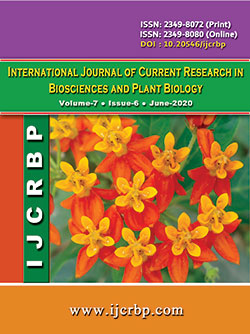 |
Online ISSN : 2349-8080 Issues : 12 per year Publisher : Excellent Publishers Email : editorinchiefijcrbp@gmail.com |
2Université Nangui Abrogoua, UFR Sciences de la Nature, Unité de Physiologie Végétale,02 BP 801 Abidjan 02, Côte d’Ivoire
Ginger (Zingiber officinale) is an annual crop, particularly appreciated for its food and medicinal uses in Côte d’Ivoire. Its uses and by-products depend on the varieties. So, this study aims to characterize the ginger production system in Côte d'Ivoire and the morphological variability of rhizomes among local accessions. Eighty accessions were collected where 114 respondents were questioned individually. Qualitative traits (color of flesh and skin, appearance of ridges on skin, presence or absence of scales on skin and fingers arrangement) of rhizomes were studied. Length and fiber content of the rhizome were measured. This study reveals that ginger is grown exclusively for rhizome and primarily for marketing fresh (88% of producers). Overall producers distinguish white and yellow flesh. Ginger cultivation is practiced by both women (46%) and men (54%) from 20 to 75 years. Cultivation takes place on small areas (0.25 to 1 ha). The most common modalities are yellow flesh (65%), absence of ridge on skin (78.75%), light brown skin (41.25%), scales on the skin (68.75%), medium fiber content (61.25%), short (61.25%) and packed (68.75%) fingers. Studies accessions constituted eight morphological groups. Two of them respectively with 41 and 15 accessions are widely distributed in six regions and seven regions.
